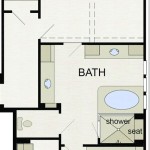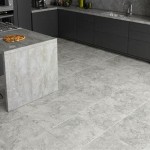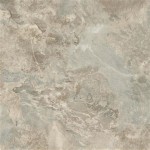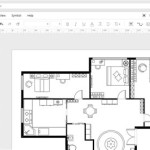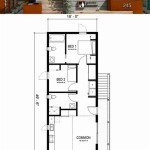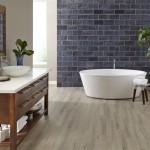Contact Paper For Bathroom Floor: A Practical Guide
The prospect of renovating a bathroom floor can be daunting, often involving significant costs, time commitments, and potentially disruptive construction. However, contact paper presents a readily available and relatively inexpensive alternative for updating the appearance of a bathroom floor. This article explores the use of contact paper for bathroom floors, focusing on its types, application, advantages, disadvantages, and considerations for durability and maintenance.
Understanding Contact Paper: Composition and Variety
Contact paper is a decorative adhesive vinyl film typically available in rolls. It consists of a printed or patterned surface adhered to a backing paper, which is peeled off before application. The adhesive backing allows the contact paper to adhere to smooth, clean surfaces. The material is primarily composed of vinyl, which offers a degree of water resistance. The available variety in design is extensive, mimicking natural materials like wood, stone, and tile, as well as offering a wide array of colors, patterns, and textures.
The thickness and quality of contact paper can vary significantly. Thicker gauges generally offer greater durability and resistance to tearing and abrasion, which are important considerations for flooring applications. Some contact papers are specifically designed for high-traffic areas or are coated with a protective layer to enhance their resistance to scratches and stains. It's crucial to carefully review product specifications before purchase to ensure the suitability of the contact paper for bathroom floor use.
Beyond the standard roll format, contact paper is also available in pre-cut tile shapes. These tile-shaped options simplify the application process, particularly for those seeking a tile-like aesthetic without the complexities of installing actual tiles. Self-adhesive floor tiles, while similar, generally offer a thicker and more durable construction compared to standard contact paper and may represent a more robust solution for bathroom flooring.
Application Techniques for Contact Paper on Bathroom Floors
Successful application of contact paper to a bathroom floor hinges on meticulous preparation and precise execution. A poorly applied contact paper will not only look unprofessional but is also likely to peel, bubble, or tear prematurely.
The initial step is thorough cleaning of the existing floor. All dirt, dust, grease, and debris must be removed. A degreasing cleaner is recommended to eliminate any oily residues. Any existing damage, such as cracks or chips, should be repaired with a suitable filler and sanded smooth. The floor surface must be completely dry before proceeding. Residual moisture can compromise the adhesive bond, leading to lifting and bubbling.
Accurate measurement of the floor area is essential for efficient use of the contact paper. It is advisable to add a few inches to the measurements to allow for trimming and adjustments. The contact paper should be unrolled and cut to size, considering the pattern alignment if applicable. For complex shapes or corners, a template made from paper or cardboard can be helpful.
The application process involves carefully peeling back a small section of the backing paper and smoothing the contact paper onto the floor surface. A plastic smoother or squeegee is used to press out any air bubbles and ensure a firm bond. The backing paper is gradually removed as the contact paper is applied, working in small sections to maintain control and prevent wrinkles. Overlapping seams should be avoided whenever possible, as they are prone to lifting and water penetration. If overlapping is unavoidable, use a sharp utility knife to create a clean, tight seam.
After the contact paper is applied, it is important to seal the edges, particularly around the perimeter of the room and around fixtures like toilets and sinks. Silicone caulk can be used to create a waterproof seal, preventing water from seeping under the contact paper and damaging the underlying floor. Pressure should be applied to the sealed edges to ensure a strong and lasting bond.
Advantages and Disadvantages of Using Contact Paper for Bathroom Floors
Contact paper offers several advantages as a flooring solution, primarily related to cost and ease of installation. Compared to traditional flooring materials like tile, laminate, or vinyl, contact paper is significantly less expensive. The materials themselves are inexpensive, and the installation requires minimal tools and expertise, potentially saving on professional installation costs.
The installation process is relatively quick and straightforward, making it a viable option for DIY projects. It requires no special tools or equipment, and the removal process is relatively easy as well. This makes contact paper a good choice for renters or those seeking a temporary flooring solution.
The aesthetic appeal of contact paper is another advantage. The wide variety of colors, patterns, and textures allows for customization and personalization of the bathroom decor. It can mimic the look of more expensive materials, providing a cost-effective way to update the appearance of a bathroom.
However, contact paper also has several significant disadvantages. Durability is a major concern, particularly in a high-moisture environment like a bathroom. Contact paper is susceptible to tearing, scratching, and peeling, especially in areas with high foot traffic or exposure to water. While some contact papers are water-resistant, they are generally not waterproof, and prolonged exposure to moisture can weaken the adhesive and cause the contact paper to lift.
The lifespan of contact paper on a bathroom floor is typically limited. It may only last for a few months to a year, depending on the quality of the contact paper, the level of foot traffic, and the amount of moisture exposure. This makes it a less sustainable option compared to more durable flooring materials. Repairs can be difficult and may require replacing entire sections of the contact paper, which can be time-consuming and may result in an uneven appearance.
Contact paper may also be susceptible to staining from spills or cleaning products. The surface of the contact paper can be porous, allowing stains to penetrate and become difficult to remove. Harsh chemicals or abrasive cleaners can damage the surface of the contact paper, causing it to fade or peel.
Durability and Maintenance Considerations
Maximizing the lifespan of contact paper on a bathroom floor requires careful attention to maintenance and preventative measures. Regular cleaning is essential to remove dirt, dust, and spills. A mild soap and water solution is generally sufficient for cleaning. Avoid using harsh chemicals, abrasive cleaners, or scouring pads, as these can damage the surface of the contact paper.
Promptly clean up any spills to prevent staining. Absorbent materials like paper towels or cloths should be used to blot up spills immediately. Avoid rubbing or scrubbing the affected area, as this can spread the stain and damage the contact paper. For stubborn stains, a mild stain remover specifically designed for vinyl surfaces may be used, but it is important to test the product in an inconspicuous area first to ensure it does not damage the contact paper.
Protect the contact paper from moisture by ensuring adequate ventilation in the bathroom. Use a fan or open a window after showering or bathing to reduce humidity levels. Wipe up any standing water or condensation on the floor promptly. Consider using a bath mat or rug in front of the shower or tub to protect the contact paper from excessive moisture exposure.
Avoid dragging heavy objects across the contact paper, as this can cause scratches or tears. Use furniture pads under the legs of furniture to protect the floor from damage. Exercise caution when moving appliances or other heavy items to prevent damage to the contact paper.
Regularly inspect the contact paper for any signs of peeling, bubbling, or damage. Address any issues promptly to prevent them from worsening. Re-adhere any loose edges with a small amount of adhesive. Replace any damaged sections of contact paper as needed. Matching the pattern and color of the replacement section can be challenging, so it is advisable to purchase extra contact paper during the initial installation to ensure a consistent appearance.
Consider applying a sealant specifically designed for vinyl floors to provide an extra layer of protection against moisture and wear. Follow the manufacturer's instructions carefully when applying the sealant. Regular reapplication of the sealant may be necessary to maintain its effectiveness.
While contact paper can provide a temporary and cost-effective solution for updating a bathroom floor, it is essential to understand its limitations and to properly maintain it to maximize its lifespan. Alternatives such as peel-and-stick vinyl tiles often present a more durable, albeit more expensive, option for homeowners looking for a longer-lasting bathroom floor update.
Waterproof Thickening 30 Cmbathroom Marble Floor Tiles Sticker Living Room Bedroom Self Adhesive Ground Wallpaper Contact Paper Home

Contact Paper Floor Diy Renter Friendly Home Decor Tiktok

Flipkart Smartbuy 100 Cm Black And White Contact Paper For Floor Waterproof Wallpaper X 60 Self Adhesive Sticker Price In Buy

Veelike Contact Paper Vinyl Self Adhesive Peel And Stick Wallpaper

Flipkart Smartbuy 100 Cm Black And White Contact Paper For Floor Waterproof Wallpaper X 60 Self Adhesive Sticker Price In Buy

Floor Wallpaper Sold On Temu United States

Wallpapers Self Adhesive Floor Wallpaper Bathroom Waterproof Stickers 3d Contact Paper Ground Tile Bedroom Kitchen Non Slip Decorative Film

Livelynine Checkered Black And White Vinyl Flooring Roll 15 8x78 8 In Floor Contact Paper Waterproof Peel Stick Tile For Kitchen Linoleum Bathroom Wallpaper Self Adhesive Wall Covering
:max_bytes(150000):strip_icc()/black_bathroom_Cuckoo4Design-AlisonConklin-59e8f6f2685fbe0011b88842.jpg?strip=all)
10 Contact Paper Diys For Your Home

Bathroom Kitchen Wallpaper Floor Wall Contact Paper Stickers Home Decor Ebay
